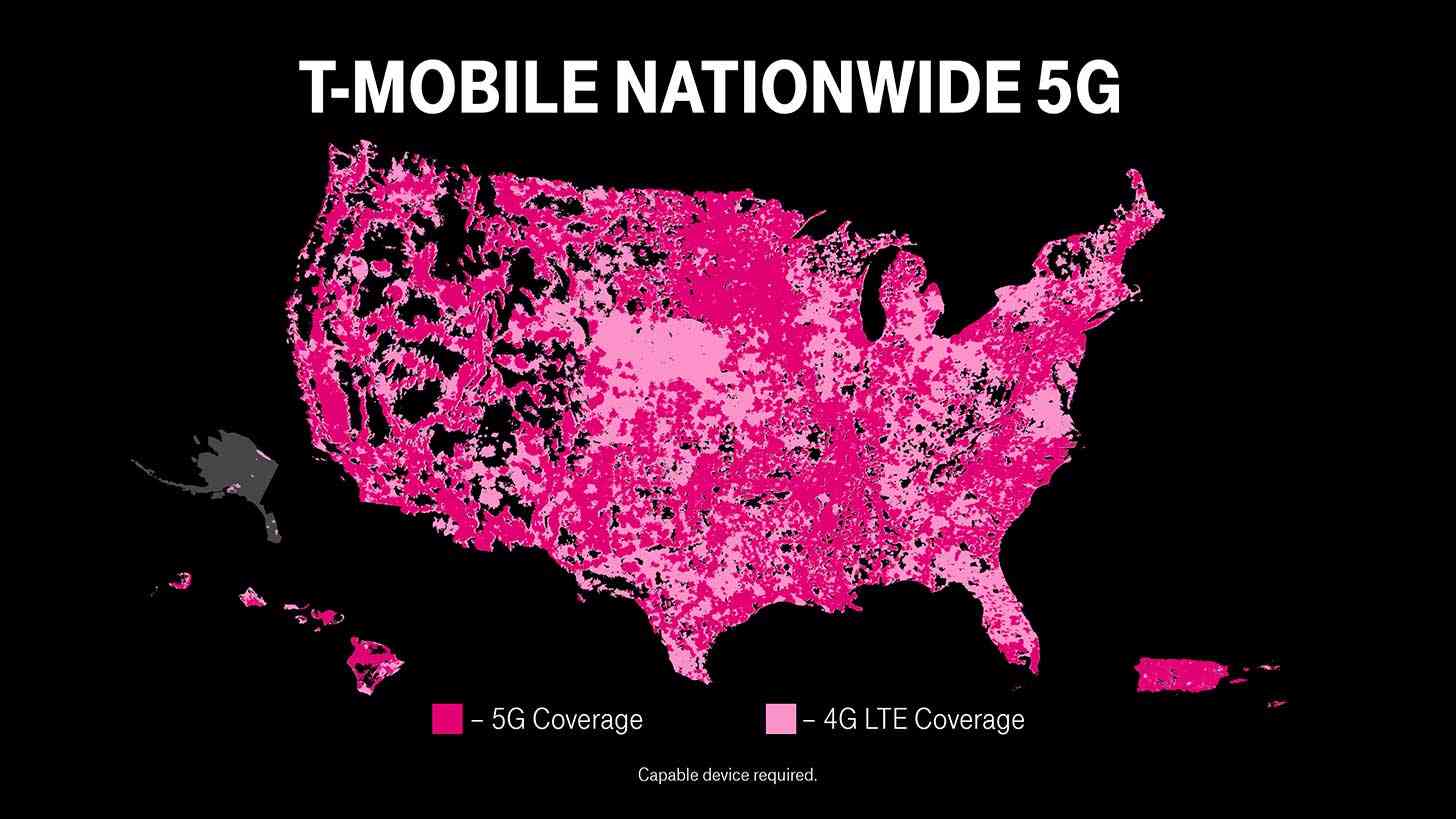
T-Mobile's 5G network is getting much bigger today.
T-Mo today launched the world's first nationwide standalone 5G network. With this rollout, T-Mobile's 5G coverage is growing by 30% and reaching nearly 2,000 additional cities and towns. The T-Mobile 5G network now reaches nearly 250 million people and more than 7,500 cities and towns in total.
The increased coverage isn't the only benefit that standalone 5G brings. It'll also help to lower latency, and T-Mobile says its engineers are already seeing up to 40% improvements in latency in testing.
With non-standalone 5G, T-Mobile's 600MHz 5G is combined with mid-band LTE to access the core network. That means that the 600MHz can only reach as far as mid-band LTE, which doesn't have the same long distance capabilities as 600MHz. The launch of standalone 5G allows the 600MHz 5G signal to go beyond mid-band's reach, meaning the 600MHz 5G signal can go farther distances and deeper into buildings.
You will need a T-Mobile device that's been updated to support standalone 5G to access this new coverage. Today T-Mo is updated its Galaxy S20, S20+, S20 Ultra, and OnePlus 8 to enable standalone 5G support, but T-Mobile has confirmed to TmoNews that it will also update the Note 10+ 5G, A71 5G, OnePlus 7T Pro 5G McLaren, and LG V60 ThinQ to enable standalone 5G.
Increased coverage is always a good thing, and this launch of standalone 5G is definitely helping T-Mobile grow its 5G network in a big way. The improved latency is a big improvement as well, though, as it should help make the data feel a bit faster. And thankfully, most all of T-Mobile's 5G phones that've launched to date will be updated to support standalone 5G, with the lone exception being the Galaxy S10 5G because of its lack of 600MHz 5G capability.
